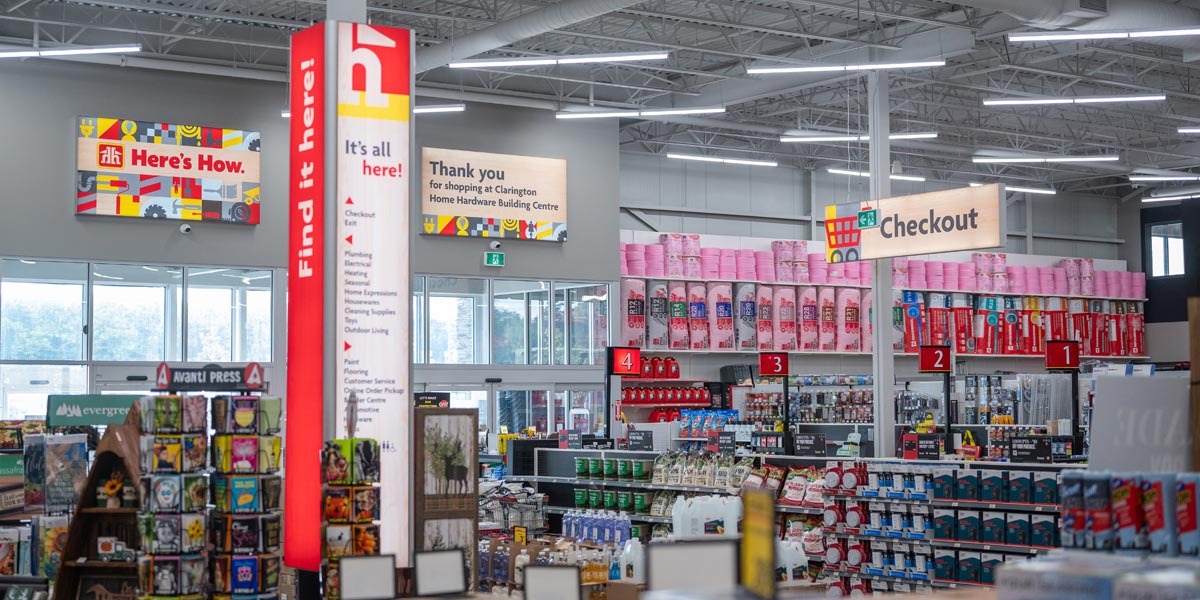Big-box retail environments are built for volume—volume of space, product and foot traffic. But here's the catch: more traffic doesn’t automatically mean more conversions.
Many big-box companies struggle with a persistent, costly problem: customers browse but don’t buy.
The culprit? Weak or inconsistent visual merchandising that fails to inspire or direct shopper behavior.
Success isn’t just about filling shelves. It’s about creating visual environments that lead, influence and convert.
The opportunity is clear: strategic visual engagement can turn passive visitors into active buyers.
This blog explores the specific tactics big-box retailers can deploy to overcome the “silent sales killer” of low in-store conversions. We’ll show how elevating in-store merchandising—from endcaps to wayfinding signage—can lead to stronger brand presence, higher sales per square foot and more consistent shopper experiences across locations.
And for those navigating tight budgets, fast timelines and strict brand standards, there’s good news: smart doesn’t mean expensive.
With modular, reusable systems from partners like The Look Company, large-format retail merchandising can be both scalable and cost-effective.
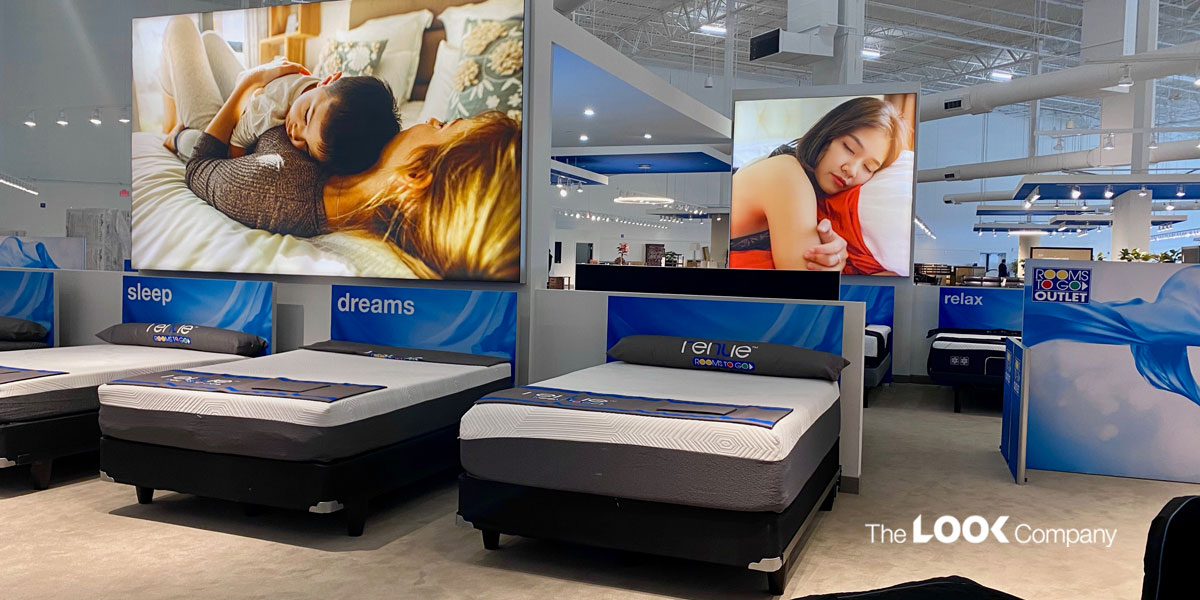
Beyond Foot Traffic: Why Visuals Drive Conversions
Foot traffic might get shoppers through the door, but most won’t take the next step without clear visual cues.
Overstimulation is real in the big-box retail store environment. Shoppers are bombarded with products, retail signage and noise. Without navigational clarity, confusion sets in, decisions stall and baskets remain light.
Visual engagement isn’t about decoration—it’s a direct sales tool. Strong visuals guide the eye, prompt interaction and influence purchase behavior.
By integrating visual storytelling into every aisle and display, retailers can subtly lead customers from entry to checkout, increasing dwell time and basket size.
This approach hinges on three fundamentals:
Clarity over clutter: Bold focal points and distinct zones reduce friction and help shoppers move with purpose.
Intentional hierarchy: Strategic layering of messaging—from attention-grabbing headers to price callouts—supports confident buying.
Emotionally resonant branding: When visuals consistently echo the brand's voice, shoppers trust the experience and engage more deeply.
These tactics aren’t optional for big-box companies—they’re essential. And they’re scalable. With solutions like tension fabric graphics with SEG or custom-sized lightboxes, it’s easy to deploy storytelling that sells across every store footprint.

Endcaps, Seasonal Aisles and Hot Zones: Untapped Opportunities
In large-format retail, prime selling real estate often goes underutilized. Endcaps, seasonal aisles and high-traffic zones are designed to capture attention, yet they’re frequently filled with generic signage or mismatched displays that dilute impact.
Think of these areas as the billboards of the big-box retail store. When optimized, they drive impulse buys, reinforce promotions and introduce new products. But when poorly designed, they become noise, ignored and ineffective.
The fix? Simplicity, contrast and action:
Focal points: To command attention, use bold colors and lighting, such as backlit lightboxes.
Visual contrast: Break the pattern with height variation, dynamic graphics or specialty materials.
Calls-to-action: Don’t assume the product speaks for itself. Clear messages like “Try Now” or “Limited Time” increase interaction.
Seasonal aisles offer even more potential. With modular systems, brands can quickly refresh displays, adapt layouts and maintain relevance without reinventing the wheel.
These displays are designed for fast change-outs and require no skilled labor, making them ideal for rotating campaigns.
Hot zones—like entryways or checkout areas—shouldn’t be afterthoughts either. These are moments to reinforce brand identity and nudge last-minute purchases with tools like freestanding banners or custom wayfinding.
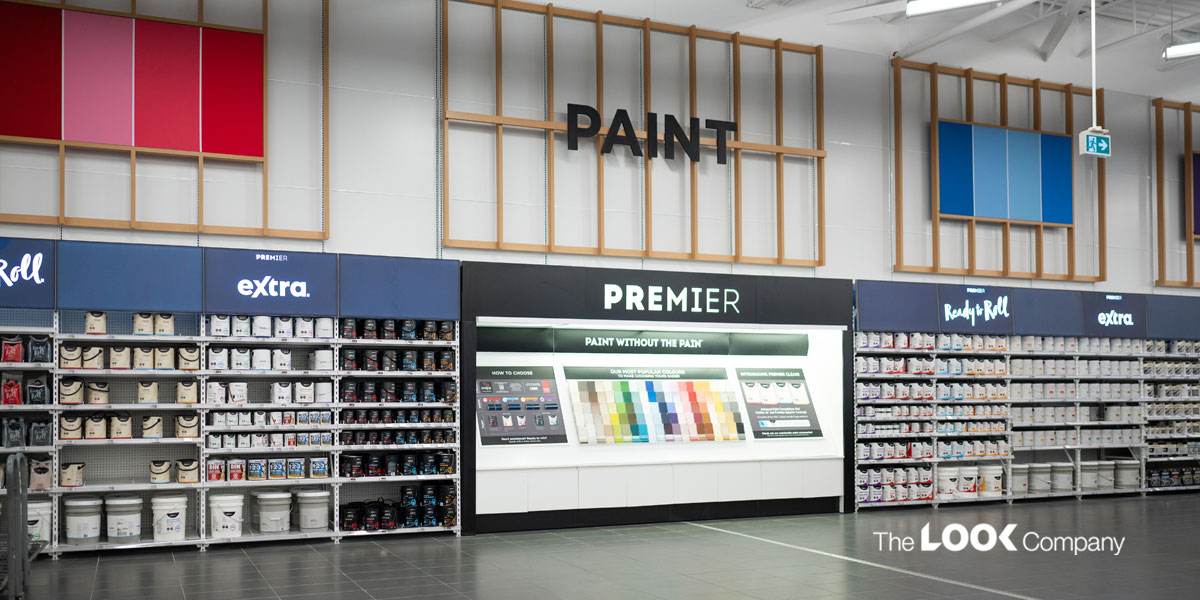
Brand Consistency at Massive Scale
For big-box retailers, maintaining a cohesive brand presence across hundreds of locations is a constant challenge.
Too often, stores go rogue, mixing outdated signage with DIY displays that clash with corporate standards. The result? A fragmented brand experience that erodes customer trust and reduces the effectiveness of in-store merchandising.
Consistency isn’t about uniformity—it’s about harmony. Every store doesn’t need to look identical, but every visual touchpoint should feel on-brand, polished and intentional.
That’s where scalable systems shine. The Look Company specializes in standardized visual programs that are easy to roll out and manage.
From custom wall-mounted SEG displays to lightweight modular partitions, our solutions are engineered for rapid deployment, tool-less setup and seamless integration with existing store layouts.
Benefits include:
Centralized control: Maintain brand integrity with pre-approved graphics and display formats.
Quick deployment: Install full campaigns across locations without extended downtime or skilled labor.
Durability and flexibility: High-quality materials like anodized aluminum frames and dye-sublimated fabrics withstand heavy use while enabling rapid rebranding.
This approach helps retail teams reclaim control over the visual experience, ensuring that the message is consistent and compelling whether a shopper walks into a store in Toronto or Tampa.
The ROI of Reusable, Modular Displays
For many big-box retail teams, visual merchandising can feel like a trade-off: either invest heavily or settle for forgettable.
But the truth is, budget-conscious design doesn’t have to mean lower impact. The key lies in modularity and reusability.
Modular display systems from The Look Company are built for flexibility. Constructed from durable aluminum extrusions, these systems form the backbone for versatile retail displays that can be reconfigured, relocated or refreshed as campaigns evolve.
When paired with interchangeable fabric graphics, they become a high-impact, low-maintenance solution that delivers ongoing value.
Here's how reusable systems drive ROI:
Lower lifecycle costs: Update visuals by swapping fabric graphics—no need to rebuild the structure.
Reduced labor and downtime: Toolless design allows quick changes without skilled labor or extended closures.
Multi-use adaptability: Reconfigure the same framework for seasonal displays, promotional kiosks or branded partitions.
From freestanding kiosks and custom product displays to modular walls and corner-wrapped signage, these systems meet the scale and speed demands of big-box companies. They ship compactly, assemble easily and support consistent branding across every store.
This isn’t just good design—it’s strategic merchandising that saves money, protects brand integrity and boosts in-store engagement.
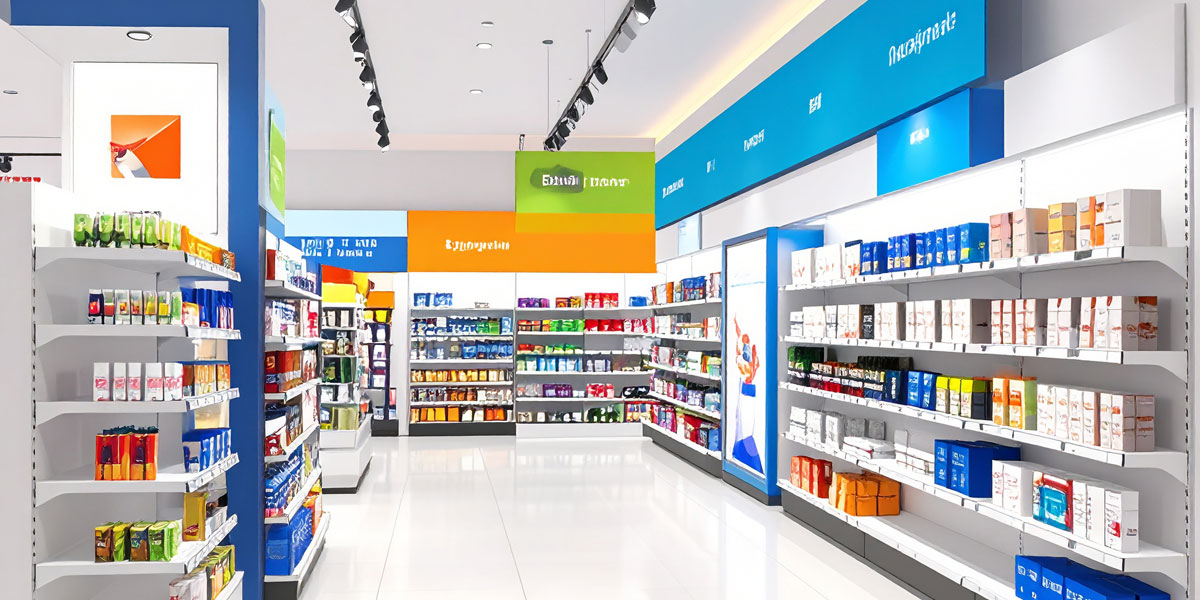
The Shopper Psychology Behind Smart Merchandising
Effective in-store merchandising doesn’t just look good—it feels intuitive. That’s because the best retail environments are built on shopper psychology.
Small design choices can have big behavioral impacts in big-box retail, where decision fatigue and sensory overload are common.
Color, layout and message placement all influence how a customer moves, feels and buys. Here's how you can use these principles to your advantage:
Color as a cue: Bright, contrasting colors draw attention. Use them to signal new arrivals, promotions or category changes—especially in seasonal aisles or hot zones.
Wayfinding with intention: Clear, logical signage reduces shopper hesitation. To lead customers confidently, incorporate ceiling-hung directional signs, wall-mounted frames or freestanding banners.
Emotional messaging: Words matter. Short, benefit-driven phrases like “Feel the Difference” or “Only Here” trigger curiosity and action.
Physical flow also matters. Strategic placement of lightboxes, SEG fabric and frames and 3D letters or logos at decision points—like aisle intersections or endcaps—keeps shoppers engaged without overwhelming them.
These tactics don’t require complete overhauls. With modular components, you can experiment, test and refine merchandising strategies quickly and cost-effectively.
Behavioral science meets operational agility—that’s smart retail.
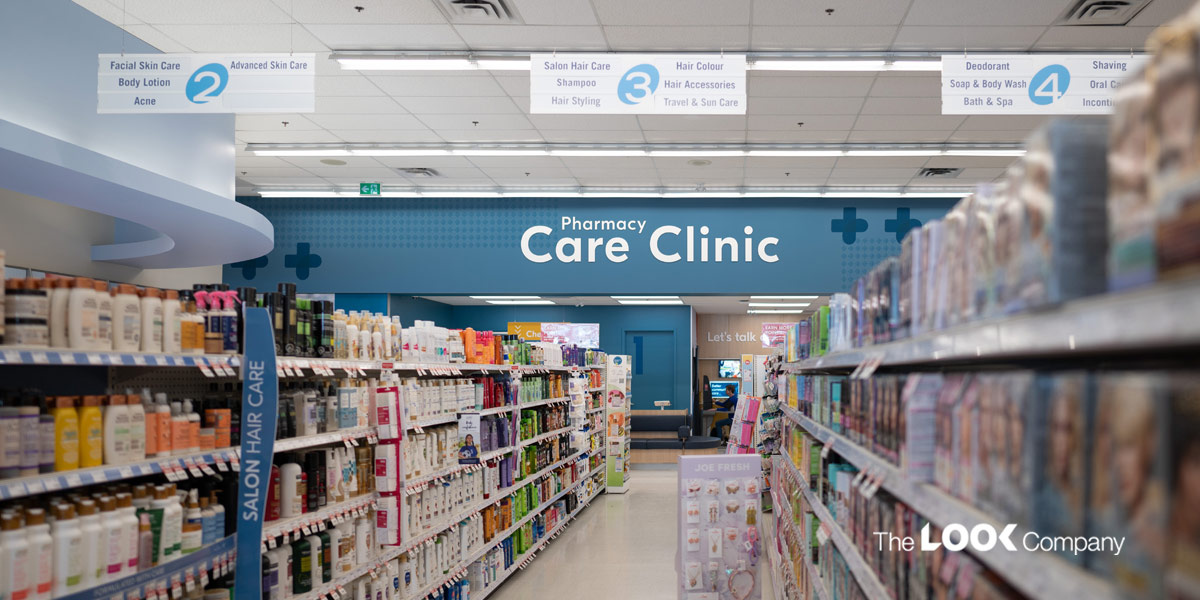
The Look Company: Turning Visual Strategy Into Sales in Big-Box Retail
In the race to drive more value from every square foot, big-box retail has one of its greatest opportunities hiding in plain sight—visual engagement. When visual elements are treated as strategic tools rather than surface-level decoration, they can guide shopper behavior, reinforce brand consistency and unlock higher conversion rates.
The Look Company understands the real-world demands of big-box companies—tight timelines, tight budgets, and high expectations. That’s why we design solutions like modular, scalable display systems that deliver impact without compromise. From lightweight SEG fabric and frames to versatile lightboxes and custom signage, our products empower retail teams to tell a cohesive, compelling story across every aisle and location.
Remember:
Strategic in-store merchandising isn’t optional—it’s the link between layout and sales lift.
Visuals should lead, not lag—bringing brand and product strategy to life where it matters most.
With the right partner, you don’t have to choose between cost-efficiency and creativity.
Want to boost your in-store conversions and elevate your brand presence in every aisle? Partner with The Look Company to design smarter, scalable solutions built for big-box retail success.
